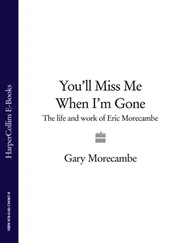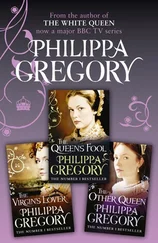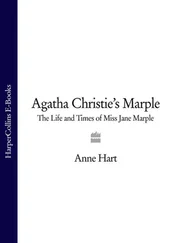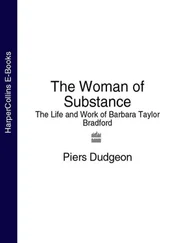Having set the date, Dee was invited by Robert Dudley for an audience with the Queen at Whitehall Palace.
At the appointed time, Dee passed through the three-storey entrance gate of chequered flint and stone and approached the Great Hall built by Cardinal Wolsey. He was presented to Elizabeth by Dudley and the Earl of Pembroke. Dee remembered vividly what she said to him: ‘Where my brother hath given him a crown, I will give him a noble.’ It was a clever play on the names of coins, the noble being a gold piece worth two silver crowns. But this was not an offer of small change. She was promising a doubling of the fortunes he had enjoyed under Edward. He was to become a favoured member of her court, a player in the great Protestant era to come.
Dee might even have imagined she meant more. Was there not a suggestion, a hint – Dee’s mathematical mind could have calculated the implications in an instant – that she was promising him not just a noble but nobility… title, money, lands, respect, reckoning for the ‘hard dealing’ that had ruined his father and deprived him of his inheritance? The Dee dynasty could be restored and he would finally have the independence to develop new ideas, the resources to build up his library and the influence to found his scientific academy.
But nothing had been explicitly promised and there was no time to dwell on such dreams. Only a few days remained before the coronation date Dee had selected and frantic preparations were already underway There was such a surge in demand for crimson silk and cloth of gold and silver that customs officers were instructed to impound all available stock. Such an order would once have been carried out by Dee’s father Roland, but he was dead by 1555, before the change of regime could rehabilitate him. 9
On the eve of the coronation, Elizabeth proceeded from the Tower of London to the Palace of Westminster, where she was to make her preparations for the ceremony. A series of magnificent pageants were performed on huge scaffolds erected along the route: at Gracechurch Street a ‘Pageant of the Roses’ represented the Tudor dynasty on a three-tiered platform; at Cornhill and Little Conduit a play on the theme of time. At Cheapside (somewhat inappropriately named for this occasion) she paused to receive a gift of a thousand gold marks, presented by the City Recorder. She passed through Temple Bar, an archway marking the City’s western limit, upon which were mounted huge statues of Gogmagog and Corineus, giants featured in the story of Brutus, a legendary king of ancient Britain who was to play a prominent part in Dee’s future explorations of British mythology.
The following morning, with the streets ‘new-laid with gravel and blue cloth and railed on each side,’ 10 Elizabeth appeared at the doors of Westminster Hall attired in coronation robes, made of cloth-of-gold, trimmed in ermine and stitched with jewels. Her auburn hair was down, emphasising her maidenly youth. She processed towards Westminster Abbey beneath a canopy carried by the Barons of the Cinque Ports, followed by nobles, heralds and bishops. The carpet upon which she trod, dusted with snow, disappeared as she went, the crowds lining the route scrambling to tear off samples to keep or sell as souvenirs.
Dee would have had his place in the Abbey, though not in the nave, which was reserved for the nobles who were called upon to declare Elizabeth’s rightful claim to the throne. Illuminated by thousands of torches and candles, standing beneath a thick canopy of tapestries amid a forest of soaring Gothic pillars, surrounded by the singing of choirs and cries of acclamation, Elizabeth then played her role in the ancient act of pagan magic that works a mortal human into a sovereign.
She emerged from the Abbey bearing the enchanted instruments of government, the orb representing the cosmos; the sceptre, the magic wand of authority; and the crown, the halo of monarchy. Smiling and calling to the crowd in a way that at least one observer thought indecorous, she walked back to Westminster Hall, where a great banquet was held that lasted until one the next morning, culminating with the Queen’s champion riding into the hall dressed in full armour, to challenge anyone who questioned her title.
When Faustus had with pleasure ta’en the view Of rarest things, and royal courts of kings, He stayed his course, and so returned home, Where such as bear his absence, but with grief, I mean his friends and nearest companions, Did gratulate his safety with kind words, And in their conference of what befell, Touching his journey through the world and air, They put forth questions of astrology, Which Faustus answered with such learned skill, As they admired and wondered at his wit. Now is his fame spread forth in every land; Amongst the rest the Emperor is one, Carolus the fifth, at whose palace now Faustus is feasted ’mongst his noblemen. What there he did in trial of his art, I leave untold – your eyes shall seeperform’d
CHRISTOPHER MARLOWE, THE TRAGEDIE OF DR FAUSTUS
Soon after Elizabeth’s coronation, Dee vanished. For nearly five years, he is absent from all historical records. 1 All that can be divined was that he spent much of his time abroad, continued collecting books and started to explore a new field of research: the Cabala.
The Cabala was a potent combination of language, mathematics and mysticism based around Hebrew. Dee had taught himself the language, and acquired his first Hebrew texts around this time. Thanks to the influence of humanists such as John Cheke, there had been a growth of interest in Hebrew, because of its potential to release the knowledge contained in ancient texts. But for the Cabalists, Hebrew was much more than another language, because they believed encoded within it were the secrets of the universe.
‘In the beginning was the Word,’ as St John put it. Dee and his contemporaries assumed that Word to have been in Hebrew, or rather its original pure form before it became corrupted by Adam’s Fall. Thus, an analysis of Hebrew was a way of discovering the structure that underlay God’s creation. The laws of nature were its grammar, the stuff of physical reality its nouns. 2
Cabalism’s obscure origins go back to first century Palestine. By the sixteenth century, it was regarded in orthodox academic circles with the same suspicion as mathematics, with which it shared many features. Among the multiplicity of methods it used to study language was Gematria, which involved searching for numbers which could be substituted for each letter of the Hebrew alphabet. By then performing arithmetical operations with these numbers, for example by ‘adding’ two words together, it was hoped to find a mathematical relationship underlying the language which would show how one phrase related to another.
Another feature of the Cabala was its numerological preoccupation with angels. Indeed, one of the purposes of Gematria was to work out how many there were (as many as 301,655,172 according to some calculations). 3 It also provided a means for working out their names and relationships to one another. For example, it identified the seventy-two angels who provide a route to understanding the ‘sephiroth’ – the ‘ten names most common to God’ which together make his ‘one great name’. The names of such angels were derived from the Hebrew description of their function, suffixed with an ending such as ‘el’ or ‘iah’.
These angels exist at the top, divine level of the Cabala’s three-tiered universe. Below them lay the celestial level of the stars, and at the bottom the elemental level of the physical world. This structure is reflected in the Hebrew language itself, in the three parts of Hebrew speech and the twenty-two letters in the Hebrew alphabet, which divided into two groups of nine letters and one of four, corresponding to the nine orders of angels, nine spheres and four elements.
Читать дальше












